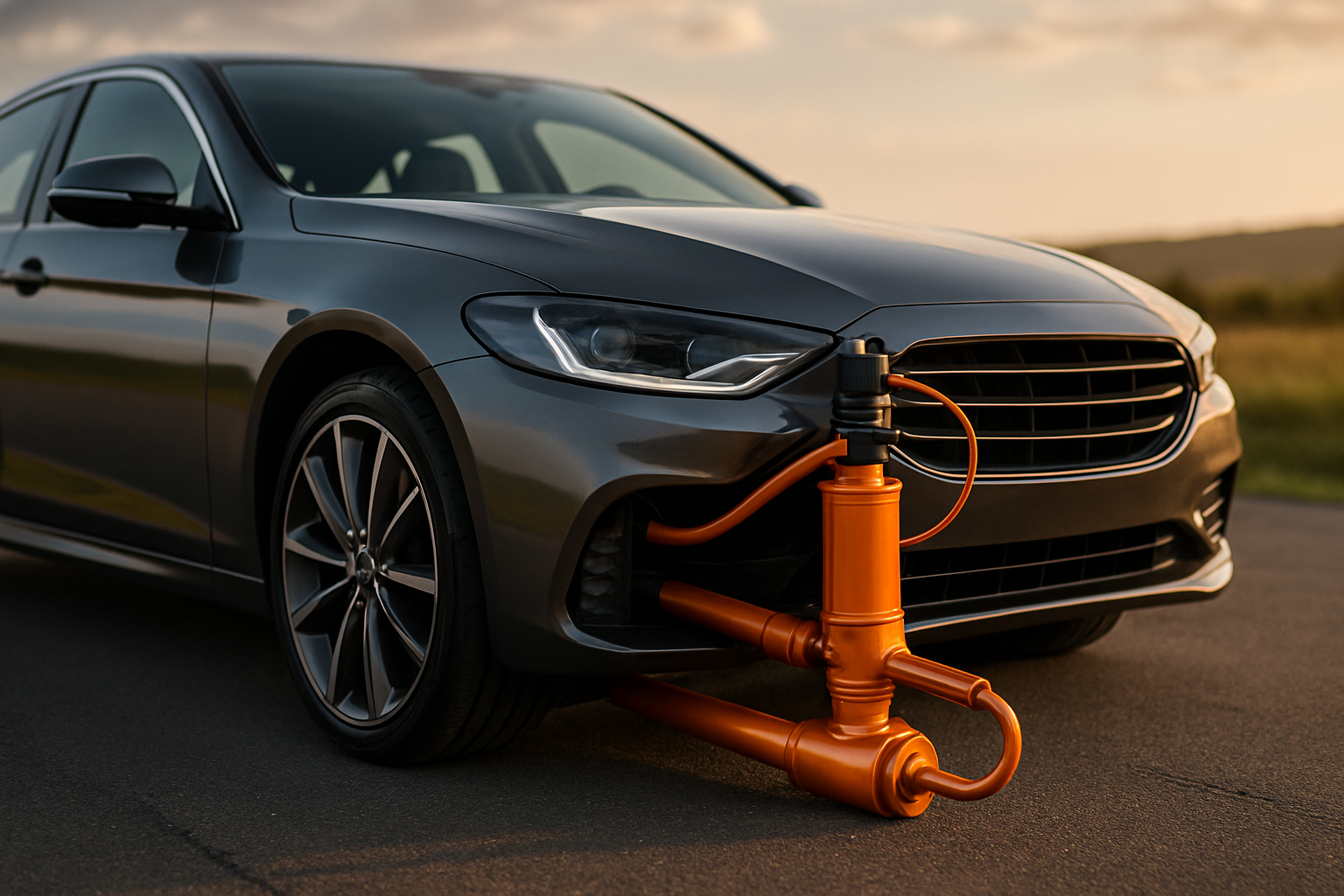Hydraulic Body Control: The Future of Automotive Comfort
Imagine gliding down a bumpy road, feeling as if you're floating on a cloud. The jarring impacts from potholes and uneven surfaces are absorbed effortlessly, leaving you in a cocoon of comfort. This isn't a dream – it's the reality of hydraulic body control, a cutting-edge technology that's revolutionizing the way we experience automotive comfort and handling. As we delve into this innovative system, we'll explore how it's reshaping the future of ride quality and vehicle dynamics.

A Brief History of Suspension Innovation
To appreciate the significance of hydraulic body control, we must first understand the evolution of automotive suspension systems. Early vehicles relied on simple leaf springs and shock absorbers, which offered limited comfort and control. As automotive technology progressed, coil springs, air suspensions, and active damping systems emerged, each bringing improvements to ride quality and handling. Hydraulic body control represents the next leap forward in this progression, combining the best aspects of previous systems with advanced hydraulic technology.
The Components of a Hydraulic Body Control System
At the heart of a hydraulic body control system lies a high-pressure hydraulic pump, which maintains a constant supply of pressurized fluid. This fluid is distributed to hydraulic cylinders at each wheel through a series of valves and accumulators. Electronic sensors throughout the vehicle monitor factors such as road conditions, vehicle speed, and driver inputs. A sophisticated control unit processes this data and adjusts the fluid pressure in each cylinder accordingly, altering the vehicle’s ride height and damping characteristics in real-time.
Benefits Beyond Comfort
While improved ride comfort is the most apparent advantage of hydraulic body control, the system offers numerous other benefits. Enhanced handling is a key feature, as the system can actively counter body roll during cornering, providing a more stable and confident driving experience. The ability to adjust ride height on-the-fly also improves aerodynamics at high speeds, potentially increasing fuel efficiency. In off-road scenarios, the system can increase ground clearance to navigate challenging terrain, then lower the vehicle for improved stability on paved roads.
Challenges and Future Developments
Despite its numerous advantages, hydraulic body control is not without challenges. The complexity of the system can lead to higher manufacturing and maintenance costs, potentially limiting its adoption in more affordable vehicle segments. Additionally, the weight of the hydraulic components can offset some of the efficiency gains provided by improved aerodynamics. However, ongoing research and development are addressing these issues. Engineers are working on lighter materials for hydraulic components and more efficient pump designs to reduce energy consumption. As the technology matures, we can expect to see hydraulic body control systems become more compact, efficient, and cost-effective.
Integration with Other Advanced Technologies
The future of hydraulic body control lies in its integration with other cutting-edge automotive technologies. For example, combining this system with predictive road scanning technology could allow vehicles to anticipate and prepare for upcoming road conditions before they’re encountered. Similarly, integration with vehicle-to-vehicle communication systems could enable cars to share real-time suspension data, creating a network of vehicles that collectively optimize their ride characteristics based on road conditions experienced by the entire fleet.
The Impact on Vehicle Design
As hydraulic body control systems become more prevalent, they’re likely to influence overall vehicle design. The ability to actively manage ride height could lead to more aerodynamic body shapes, as designers won’t need to compromise aesthetics for ground clearance. Interior layouts may also evolve, with the potential for flatter floors and more spacious cabins due to the compact nature of hydraulic components compared to traditional suspension systems.
Hydraulic Body Control in Performance and Luxury Vehicles
While the technology is still primarily found in high-end luxury and performance vehicles, its benefits are particularly pronounced in these segments. In performance cars, the system can provide a dual personality – soft and compliant for comfortable cruising, then firm and responsive for spirited driving or track use. Luxury vehicles benefit from the unparalleled ride quality and the ability to maintain a level stance regardless of passenger or cargo load, enhancing the overall sense of refinement.
The Road Ahead for Hydraulic Body Control
As we look to the future, hydraulic body control is poised to play a significant role in shaping the automotive landscape. As the technology becomes more accessible, we can expect to see it trickle down to more mainstream vehicle segments, bringing advanced comfort and handling capabilities to a broader range of drivers. The continued development of this system will likely lead to even more precise control over vehicle dynamics, potentially revolutionizing how we think about the compromise between comfort and performance in automotive design.
In conclusion, hydraulic body control represents a significant leap forward in automotive suspension technology. By providing unparalleled comfort, enhanced handling, and adaptability to various driving conditions, it’s setting new standards for what we can expect from our vehicles. As the technology continues to evolve and integrate with other advanced systems, we’re moving closer to a future where the perfect balance of comfort and performance is no longer a compromise, but a standard feature of our daily driving experience.





